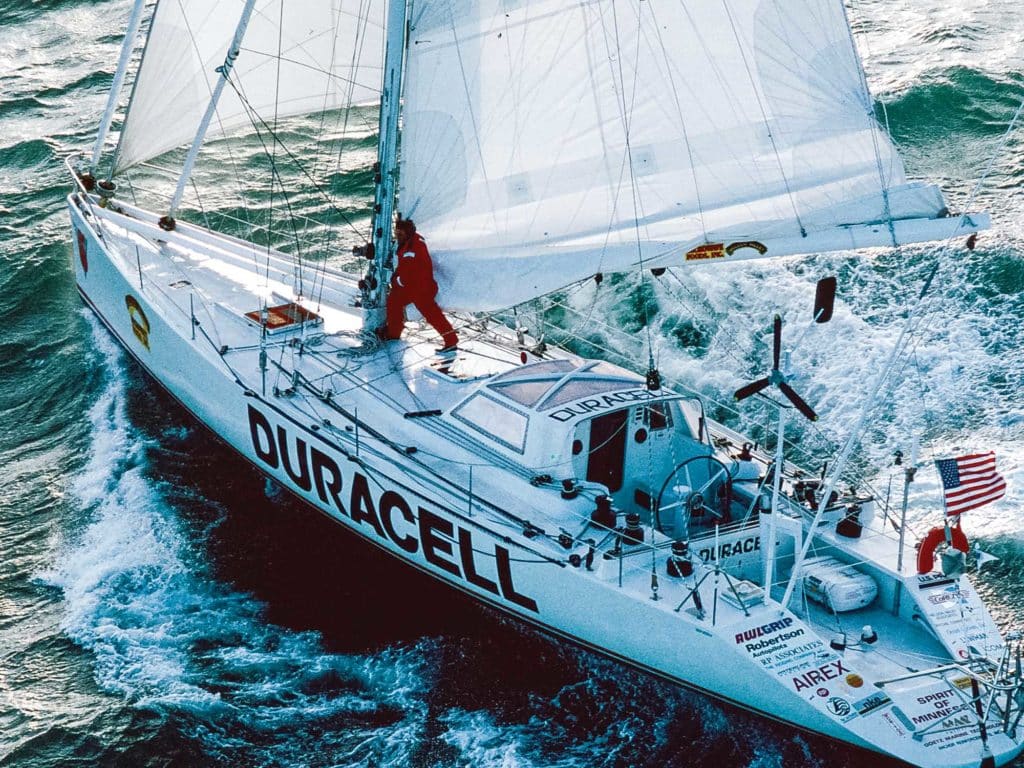
Recently I have observed my husband, Matt, at various times of the day and evening, sitting with a half-smile on his lips and a twinkle in his eye, betraying an inner glee. I know during these times that he is thinking about what I have come to call, simply, “The Hull.” Matt has taken offense to that term, deeming it “soulless.” Fair enough—it’s not just any hull, but one with a storied past and, hopefully, a storied future as well. For we are in the midst of refitting the late, great American solo sailor Mike Plant’s round-the-world racer, Duracell, for extended cruising. But before we get into that sailing story, let me tell you ours.
To do that, let’s return to 2014, to a crisp fall evening during one of our first dates. We were walking on a moonlit beach here in Washington’s Puget Sound when Matt told me that one day he was going to cruise around the Pacific. He didn’t say it was a dream or that he hoped to do this one day: He stated it as a fact. And he said it in his unassuming, no fanfare, no drumrolls (he leaves that to me) sort of way. He asked whether such an adventure might appeal to me. I didn’t respond right away because I knew this was a serious question and that my answer could have big implications for my life. So I gave it a few long seconds and then I replied, with confidence, “Yes.”
Fast-forward to spring 2017. I was teaching middle school science in Seattle, and Matt was running Kolga Boatworks, his boat-repair business. We were living aboard Louise, a unique 40-foot homebuilt monohull from the 1970s that we adored, on the Ballard Shipping Canal. We were preparing for our Pacific cruise. We’d saved our money, Louise was ready to sail offshore, and we’d put our respective jobs and lives on hold. Our parents had slowly been persuaded that what we were about to do—with careful, trustworthy Matt as captain—was safer than driving on I-5.
We pushed off from Shilshole Marina in Seattle on August 10 of that year. As Bruce Springsteen’s “Born to Run” filled our hearts with butterflies, our first day of sailing was gorgeous: The wind pushed us gently but persistently toward the Strait of Juan de Fuca and the great Pacific Ocean beyond.
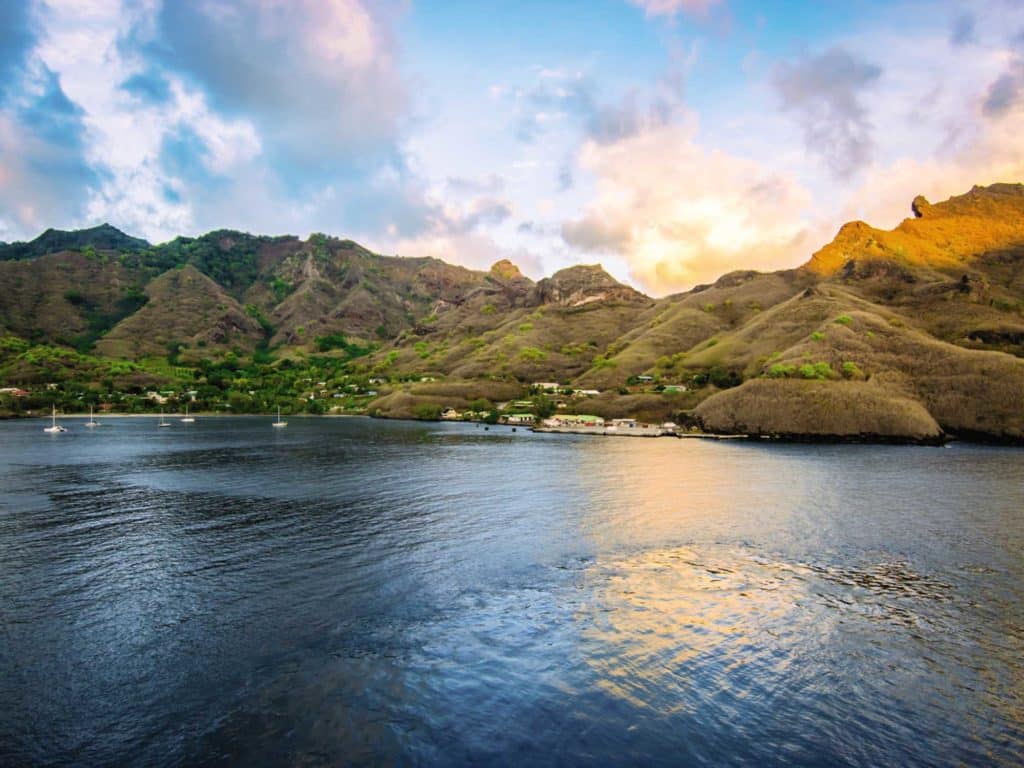
The cruise that followed was everything we expected it would be: magical, challenging, uncomfortable, eye-opening, educational, nausea-inducing, at times maddening and, ultimately, life-changing. Here are a few snapshots of our two years at sea, based on journal entries from various anchorages or underway, as we sailed from Seattle down the west coast of North America; into the Sea of Cortez; across the Pacific to the Marquesas, the Tuamotus, Tahiti and Bora Bora; north to Hawaii; and back home to Washington.
Smuggler’s Cove, Channel Islands
October 15, 2017: Smugglers Cove on California’s Santa Cruz Island is a shallow bay with clear, Mediterranean waters and a long beach. After anchoring Louise as close to the cliffs as possible to try to get some protection from the rolling swell, we decided to go ashore and explore. We were a little nervous because big rollers were coming in and breaking a little beyond the anchorage and pummeling the beach. But we discussed our strategy for a dry landing using our inflatable paddleboards.
Matt explained that the waves come in sets, and if you wait out a set of big waves, there will be a short lull. During that lull, you position yourself between two gently rolling waves, then paddle, paddle, paddle fast enough so that the one behind you doesn’t break over you. With confidence, we put on our hiking boots, cinched on our wide-brimmed cruiser hats, got on our paddleboards, and headed toward the beach. Matt positioned himself just before the big rollers began to break.
He turned around and gave me a look that said, “Watch carefully what I do.” He waited for the lull. It came. He paddled and paddled. I felt an especially large roller move under my board. The lull was over. Matt glanced back to see a big wave break right over him. I watched his board flip, his hat float to the beach and, a second later, a drenched Matt emerge from the ocean, ready to explore. He looked back at me and shrugged. I gave him a look that said: “Now you watch this. I’ll show you.”
I was determined. I looked behind me; the ocean was flat. Now was the moment. Go. Paddle. I was riding high and dry. My impeccable timing resulted in a gentle wave breaking after it passed under my board. Perfect. I picked up some speed and surfed on in, graceful and dignified, a natural. Not a drop of water on my hiking boots. Matt watched from the beach in awe. I couldn’t wait to explain my strategy. But then the water slid under me a little faster, and the nose of my board started to drive down into the water. I was still going to succeed. No squishy hiking boots for me. Then I too was in the water, tumbling under the wave. Dammit. I resurfaced in time to see my hat make it to the beach before me. Oh well. Once deposited onto the Channel Islands, it was a wonderful place to explore. Santa Rosa, Santa Cruz and Catalina islands delighted us with their canyons, secluded beaches and windswept cliffs. The adventure had begun.
Bahia Santa Maria to Cabo San Lucas
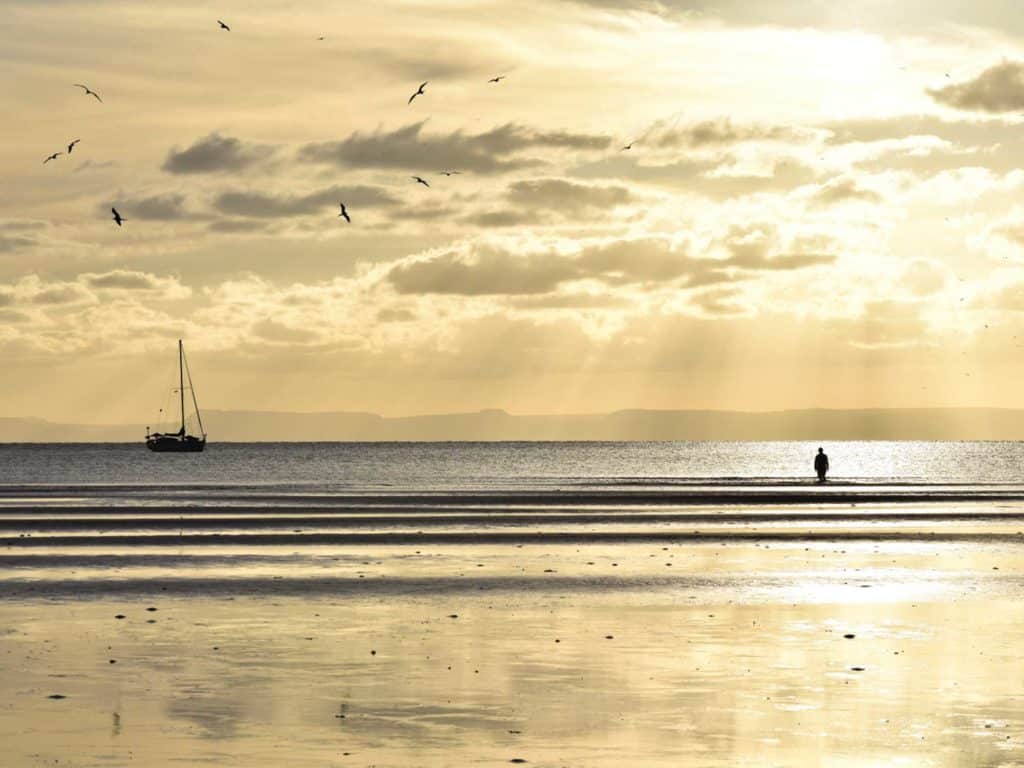
November 11, 2017: As I sat in my belowdecks nook typing, Matt leaned in from the cockpit and said: “I sure hope this weather keeps up all the way to Cabo. That’d be so awesome.” The sailing was, indeed, currently awesome. Sliding down the coast of Mexico, we had 10 to 12 knots of northerly breeze, filling our spinnaker consistently with the gentle waves right on our stern. There was a shh-shh-shh of the water trickling off the hull and a lovely little skimming motion of the boat down the waves as they passed under us.
I’d been reading about Zen Buddhism and experimenting with meditation. I’d concluded that sailing your home around the ocean is a natural way to practice the teachings of Buddhism. I looked up at Matt and replied: “The present moment is perfect; however, since everything, including the wind, is impermanent, we mustn’t get attached. Ah, yes, the wind and the waves are constantly changing, like life, and we have to move with the change, not against it. Indeed, we must search for the stillness, the calm, deep within us that stays peaceful no matter how our external situations change; much like how if you go a little under the surface of the ocean, the water is calm.” At which point, he closed and locked the hatch.
I’m kidding: I didn’t say this out loud, but I did think something along those lines and tried to persuade myself of its truth. I, much more than Matt, get frustrated by the constantly changing state of the ocean. Of course, if the weather is taking us to our destination and the sea is relatively calm, I’m as happy as a clam. But if we then lose our wind and have to “fire up the ol’ donkey,” or get a header, or if the waves built up and made for a miserable ride (as it always does eventually), I tended to let out audible groans and sighs, with a general feeling of being smote by the ocean. Sometimes I complained out loud to myself, and we sailed, or more likely, motored on. I’d recently realized that since this will undoubtedly continue to be our reality for the next two years when traveling to our next highly anticipated anchorage, I should probably figure out a way to deal with it more gracefully (for my benefit and, equally, Matt’s) when the weather changes. As it always, always does.
Huahine, French Polynesia
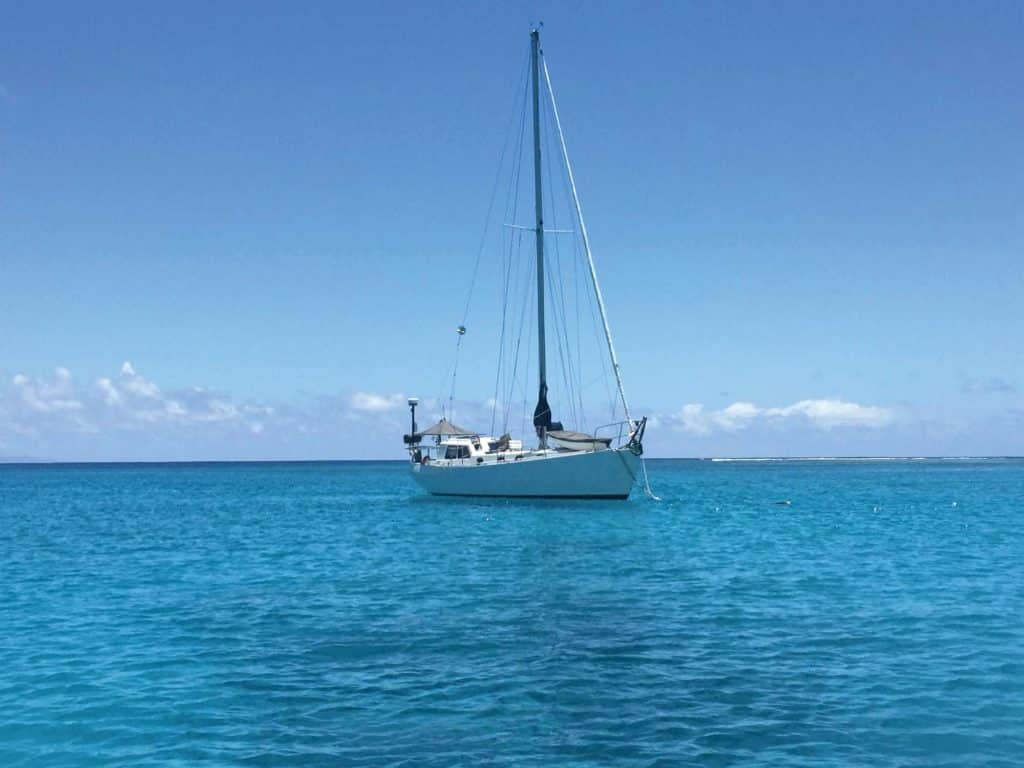
November 3, 2018: After spending eight months in French Polynesia, we’d started to get a feel for this really special place. Here is what the shimmering surface of French Polynesia looked like: lush islands dripping with bananas, coconuts, soursop, cedar apples, mangoes, pineapples, cocoa, and fruits we had never heard of before; turquoise lagoons filled with imaginatively colored fish, warm waves that gently lap soft white-sand beaches; a hundred shades of green that blanket the steep mountains and jagged basalt spires that pierce the pale sky. At night, the Milky Way scatters in full splendor across the black expanse while the sweet smell of white gardenias lingers in the warm dark air.
The beauty of the islands was reflected in the people. The older women here had a twinkle in their eyes like light reflecting off ripples in the water; they stand close to you and smile and press mangoes into your hands. Men frequently carry around their babies, cooing at them (this society loves their babies and seems to view them as gifts to the larger community rather than the property of nuclear families), and women seem empowered. They are authentic, confident, fully and naturally themselves, somehow. They laugh a deep, unrestrained belly laugh when they are with each other, standing in circles waist-high in the warm water. Outside Papeete, in the small villages, there are no movie theaters, no big-box stores, no places to buy the latest shoes in fashion, no billboards telling you what you need to buy to be cool. In the afternoons, families gather at the water’s edge. They spend time together on porches. They sing out “Io orana!” as you walk by. No one is ever in any kind of hurry. The ancient Polynesian names of the islands, such as Matairea, translates to “joyful breeze,” and the 21st century Polynesians seem connected to their past and the people from whom they descended. They bury their relatives in graves in front of their homes, adorn them with flowers, and have picnics on top of the graves.
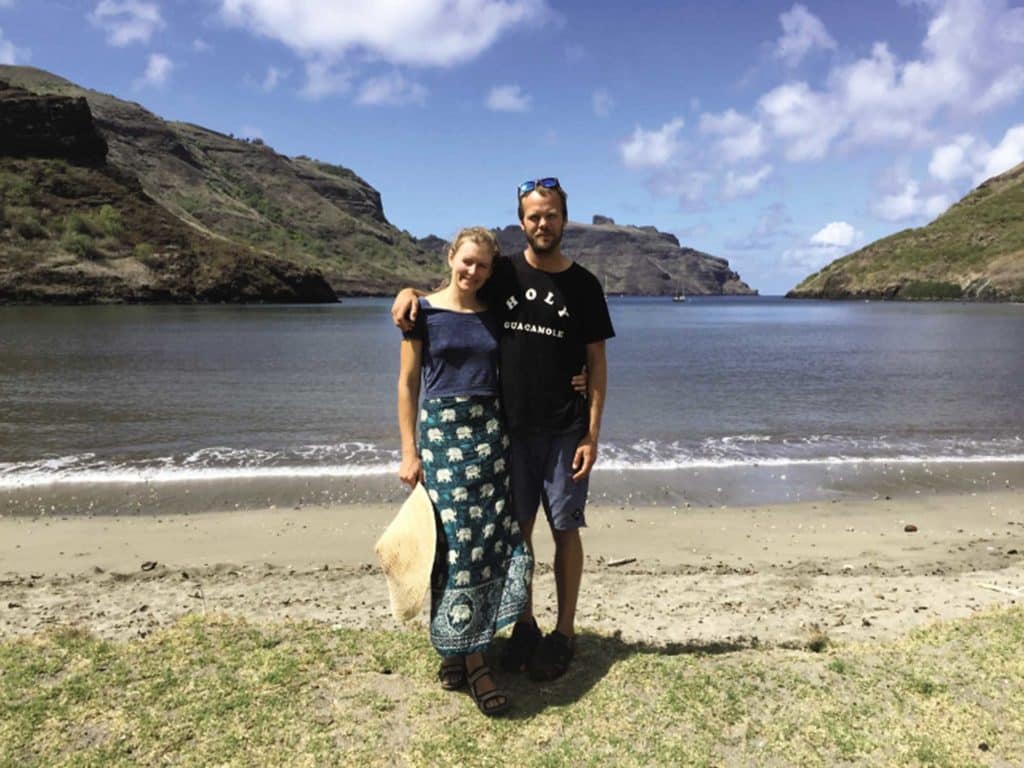
Lihue, Hawaii
July 19, 2019: It was hard to believe it had been almost two years since we pushed off the dock at Shilshole and began our journey through the Pacific. We’d sailed and motored 13,000 nautical miles, visited 135 anchorages and 30 islands, and experienced less-measurable things too. There was nothing definitive about the end of the trip; it was more of a gradual ending that merged into new beginnings at the same time. That said, the 19th of July was momentous. I decided to fly home, and a friend of Matt’s flew in to replace me for the final passage. As we walked to the airport, it felt like there was so much to say, but we had no idea exactly what, so we ended up walking mostly in silence.
The end of the voyage didn’t really feel like a hard and final conclusion because the cruise had fundamentally changed how we wanted to structure our lives. It set us on a path. We’d started to reflect a little, here and there, about how the previous two years had changed us. We can, and should, live our lives according to our own rules and dreams, and if those happen to go against the societal grain, so be it.
We dreamed and schemed of a future in which we lived on a self-sufficient boat, powered by solar, wind and hydro, that Matt had built. We wanted to work for ourselves and try to find a good balance between our vocations and everything else life has to offer. We wanted to live minimally and frugally so that we could afford more free time. We wanted to be able to pull up our anchor and go exploring anytime. All of British Columbia and Alaska lay to the north, and Oregon and the rest of the planet to the south. We both were full of aspirations and dreams, and the conviction to make this vision a reality, though our dear friend Salty might read all this and with a roll of his eyes say, as he has said before, “Such bums!” Maybe he’s right.
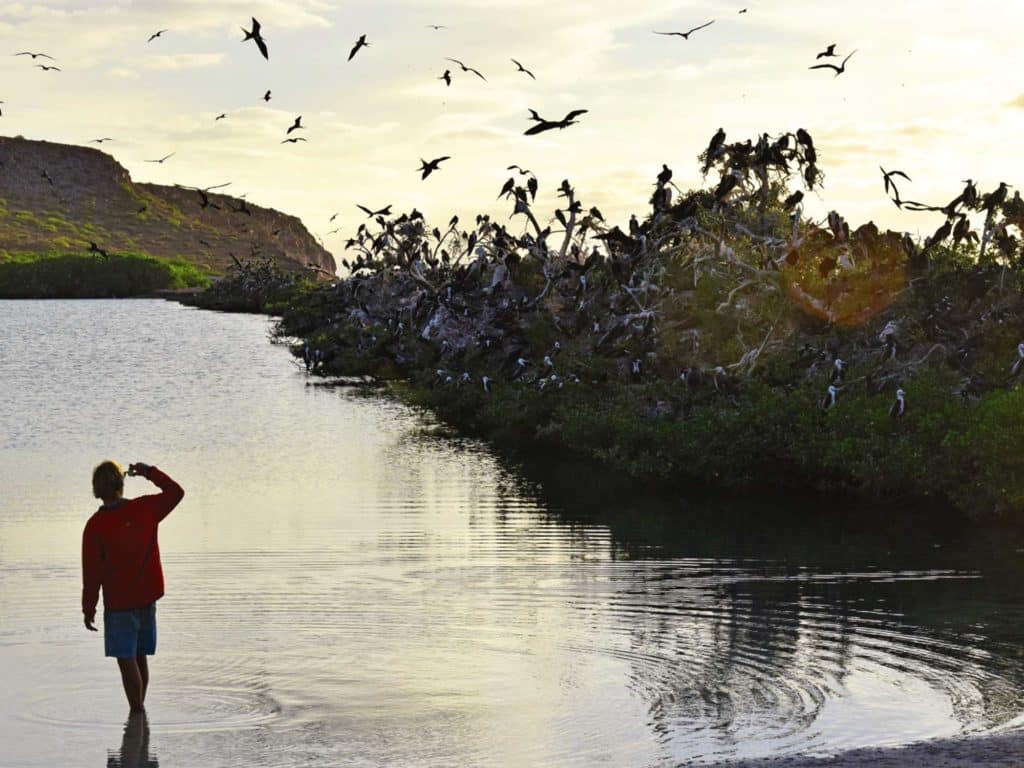
Throughout our cruise, Matt became increasingly interested in the features of a good cruising boat. Many hours were spent sitting in our cockpit in anchorages around the Pacific, scrutinizing other boats. He read all of Steve Dashew’s books. He became intrigued by Open 60s, offshore racers that have evolved over the past few decades in round-the-world races such as the BOC Challenge and the Vendée Globe. He started sketching designs. He dreamed about all the ways he would create an ideal cruising boat if he had the opportunity.
Olympic Peninsula, Washington
January 2022: Which brings us to the present. We’ve sold Louise and bought a small house in the woods in Washington, and Duracell is now ours, parked right outside our home (see the photo below). How she came to be ours is a story in its own right.
Designed by Rodger Martin (who passed away in May 2021), Duracell was built by Mike Plant back in the mid-1980s and named after the battery manufacturer that sponsored the boat. Afterward, Plant circled the globe aboard her twice, setting the American record for a solo circumnavigation during the 1989 Vendée Globe, a dramatic story that’s well-told in the documentary Coyote: The Mike Plant Story (available on Amazon Prime and other streaming services).
Thirty years ago, Plant sold the boat to a sailor from Seattle named John Oman, who renamed her Northwest Spirit and sailed her to victory in the Pan Pacific Race across the Pacific to Japan. He next set off on a solo, nonstop circumnavigation of the planet that came to a halt somewhere near the equator after a collision with a cargo ship. Northwest Spirit was dismasted, but the hull didn’t sustain much damage because the bowsprit took most of the blow. The cargo-ship captain offered him a ride, but Oman opted to motor to Turtle Bay in Baja California, where he refueled and carried on to San Diego, where he loaded the boat on a trailer and drove it to Seattle, where he put it in his front yard.
That was in 1992.
In 2019, just a few weeks after we arrived home from our Pacific voyage, Matt was scrolling through a local sailing forum when he saw a new post from Oman:
“I bought Mike’s Duracell from him as he was building his next boat, Coyote. My plan was to do my own nonracing, solo, nonstop circumnavigation. After bringing her to Seattle (through the Panama Canal) and winning the Pan Pacific Race, I brought her solo back from Japan as a shakedown. My circumnavigation was cut short by losing the top 50 feet of the mast in a collision with a freighter. Putting her on the hard next to my home, it was my intention to put her back together and return to sailing. Shore life got in the way with business and family obligations, and now age and health issues. I no longer have the means to chase that dream. So what now? I love that boat. I can’t imagine a more easily handled, seakindly, safe, proven, shorthanded boat capable of sailing anywhere on Earth. So a refit for a solo circumnavigator? Or shorthanded go anywhere?”
Immediately the wheels began turning in Matt’s head. I got a text from him that simply said, “I found our next boat.”
The pandemic delayed everything, but during that time, we got to know Oman, and worked hard to earn his trust and prove that we were worthy of this special refit project. Almost two years after his original post, Oman generously decided to release the boat to us.
But why this boat? Matt says that it’s the most solid, safest, best-built, fastest hull out there: a very special shell that we can turn into a comfortable home. Before the pandemic, he traveled to Rhode Island, where Duracell was built, and was thrilled to meet Rodger Martin, who graciously gave him copies of the original drawings. Armed with those, the refit is now well underway.
Former science teacher Janneke Petersen and her husband, Matt—a seasoned sailor who was part of the winning crew in the inaugural Race to Alaska in 2017—are well into their ambitious refit, which they’re chronicling on their YouTube channel, The Duracell Project. Also look for more updates in future issues of CW.
Mike Plant’s Famous Duracell
Before he was tragically lost at sea in 1992, solo sailor Mike Plant twice circled the globe aboard his Open 60, Duracell. His most memorable voyage came during the 1989 Vendée Globe. Midway through the race, deep in the Southern Ocean, Plant was forced to anchor in the remote Kerguelen Islands to address rigging problems. Though he completed the repairs himself, he did accept brief assistance from a team of New Zealand meteorologists when Duracell dragged anchor.
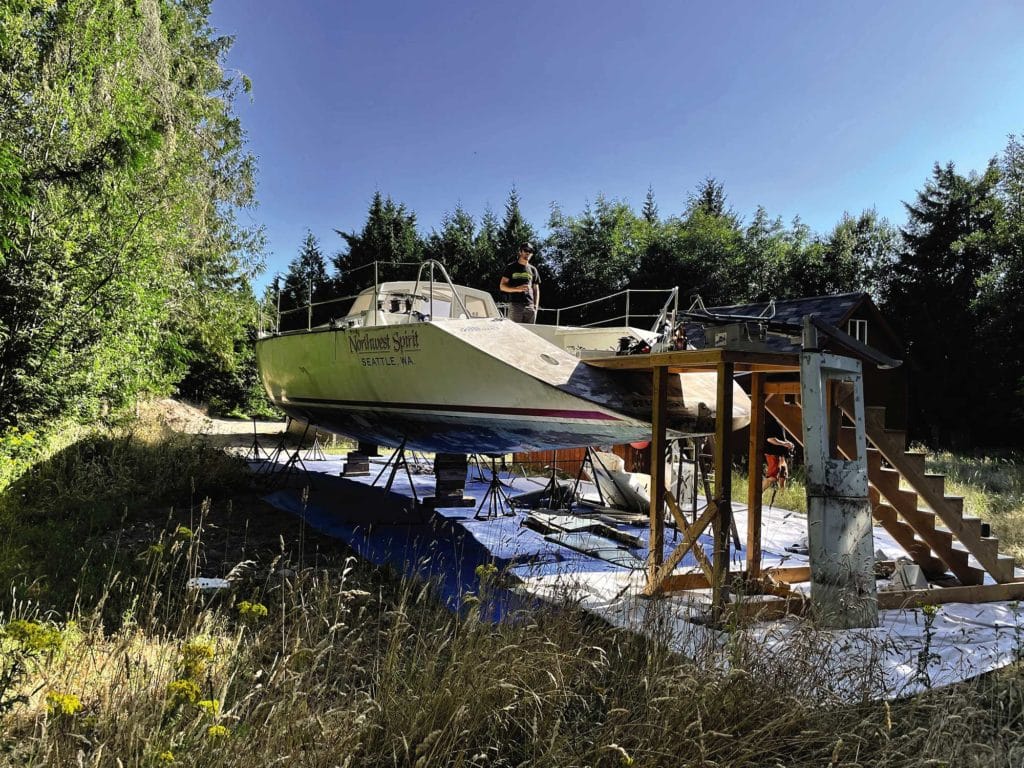
Though the Kiwis told Plant they’d be sworn to secrecy, he radioed race headquarters that he’d had help: an automatic disqualification. But Plant finished the course by sailing alone back to France, where he was greeted with a hero’s welcome and set the American record for a singlehanded circumnavigation of 134 days. He disappeared aboard his next boat, Coyote, en route to the 1992 running of the Vendée race. —Herb McCormick








